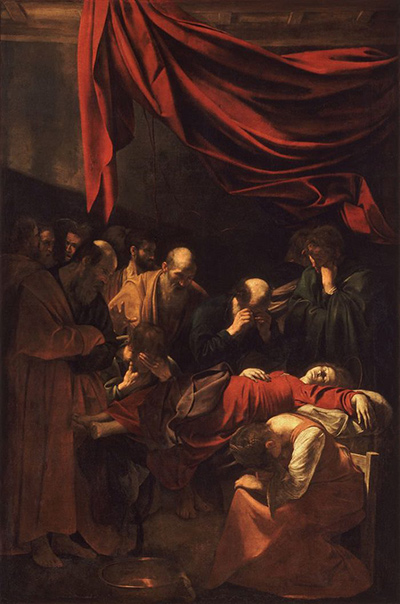One can rightfully observe that Death of the Virgin (1606) was one of the paintings which illustrated his amazing sense of realism.
Much like his paintings, Carvaggio tended to espouse vulgarity alongside passion.
Known for brawling as well as his eccentric behaviour (possibly due to high concentrations of lead found within his paints), he was exiled from Rome and travelled to various other cities. An attack in Naples left him facially scarred and it is claimed that he died of fever in 1610.
Michelangelo Merisi da Carvaggio was born in Milan in 1571. After the death of his mother in 1584, he soon began an apprenticeship under the artist Simone Peterzano. It was during this time and visits to other cities such as Rome when Carvaggio would begin to develop his personal style of what has sometimes been called sombre realism.
After spending time in Milan, he travelled to Rome in the year 1592.
While struggling at first, he soon formed influential friendships with such personalities as Onorio Longhi and Propero Orsi.
It can be argued that the first painting which exhibited his sense of natural realism was Basket of Fruit (1596).
It is also interesting to note that he seemed to vacillate between producing works of everyday street life and religious events; a habit which was considered to be quite odd for his day.
Carvaggio painted figures as they eye observed them as opposed to espousing a more idealised approach. This proved to be slightly controversial for his time; particularly because the works of Michaelangelo were extremely popular.
Still, his prestige grew and in 1599, he was commissioned to paint the Contarelli Chapel. This work became an immediate sensation and he soon enjoyed greater fame.
Many contemporaries observed that while he was an excellent painter, he had "fallen far from the grace of God". It is also interesting to note that the work was initially rejected; he used a well-known Roman prostitute as his model for depicting the virgin. Other notable works during this time included Conversion on the Way to Damascus and Madonna di Loreto.




